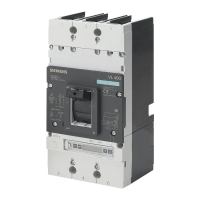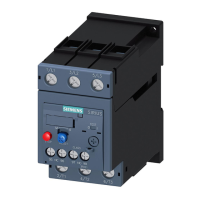Application planning
5.7 Use in unusual environments:
3VL IEC molded case circuit breakers
68 System Manual, 11/2013, 110 0110 - 02 DS 03
Thermal-magnetic overcurrent releases
Thermal-magnetic overcurrent releases are calibrated to 50 °C. As a result, the tripping
times of the thermal overcurrent releases increase for a constant current at low
temperatures.
To correct the tripping times, the thermal overcurrent release settings must be changed by
the factor from the table "Derating factors for thermal-magnetic overcurrent releases" in the
technical data (lower settings).
Use in systems with other frequencies
If low-voltage switching devices designed for 50 / 60 Hz are to be used at other line
frequencies, the following points must be taken into consideration:
● Thermal effects on the system components
● Switching capacity
● Service life of the contact system
● Tripping characteristics of the overcurrent releases
● Behavior of the accessories
Thermal rating of the system components and conductors depending on the line frequency
Molded case circuit breakers designed for alternating current of 50 / 60 Hz can be used at
lower frequencies for at least the same rated currents. However,the permissible operating
current must be reduced at frequencies higher than 100 Hz to ensure the specified
temperature rise limits are not exceeded.
Influence of temperature and humidity on overcurrent releases
The relevant reduction in the rated operating current (derating) of the 3VL molded case
circuit breakers is also necessary if the operating temperature of 50 °C or 70 °C is exceeded
at a relative humidity level (non-condensing) of 95%.
Thermal-magnetic TM releases
Figure 5-5 Thermal-magnetic TM
0 °C to +70 °C, ☂ 95%
The SENTRON VL thermal-magnetic releases are designed for use in ambient temperatures
up to 70 °C and a relative humidity level (non-condensing) up to 95%. The appropriate
correction factors must be applied for ambient temperatures above 50 °C. You can find more
information in Chapter 11.4 "Reduction factors"

